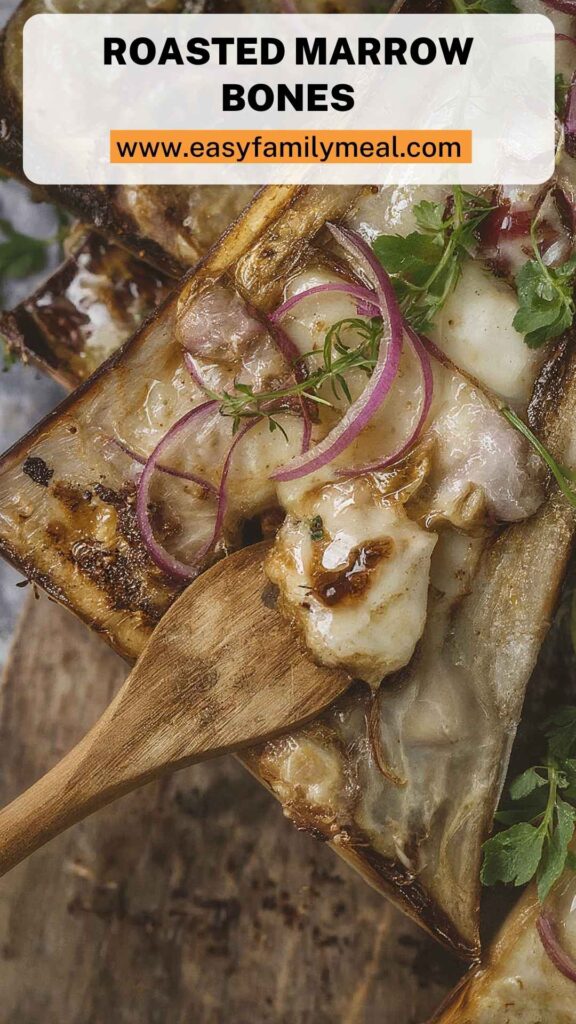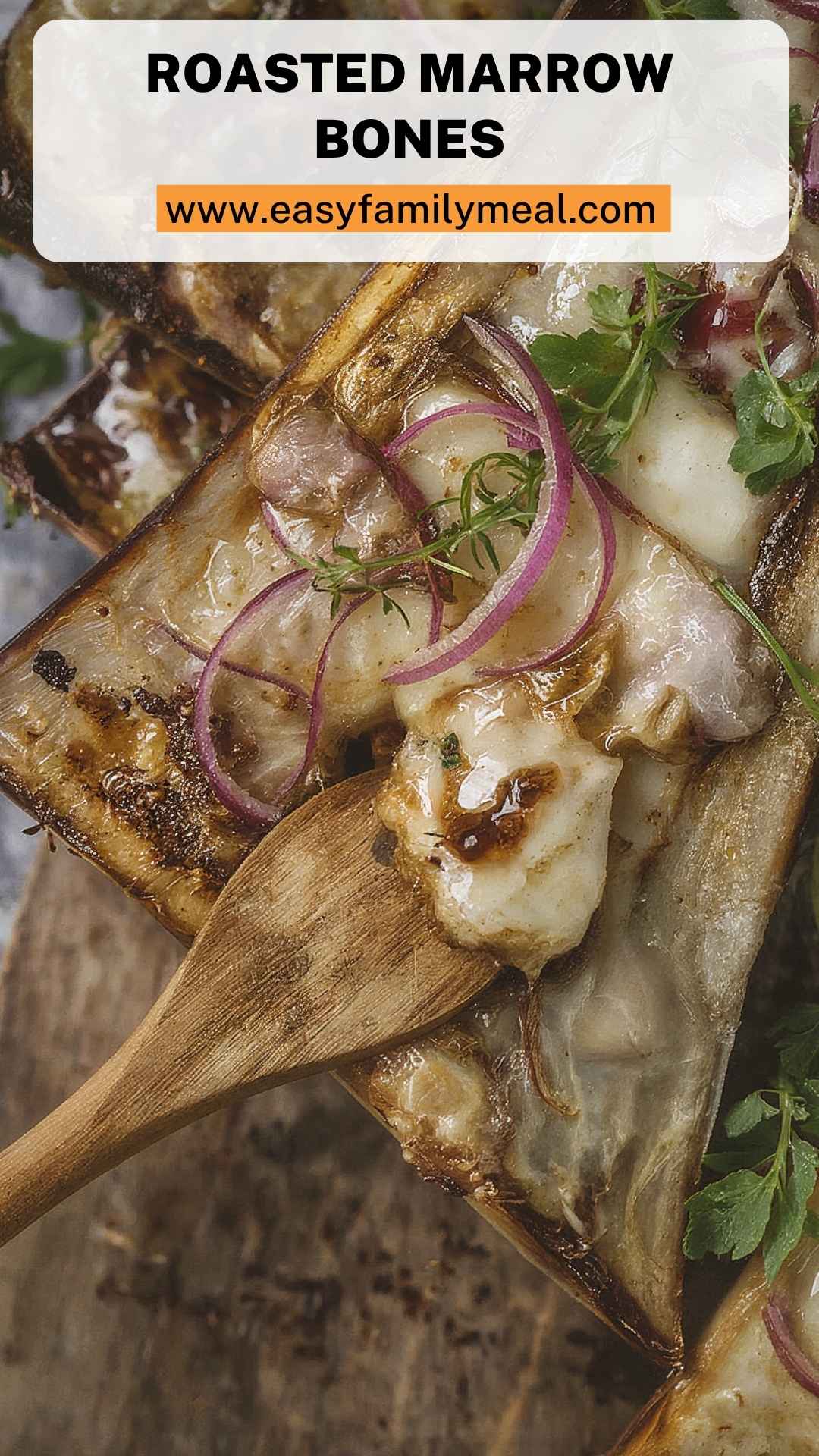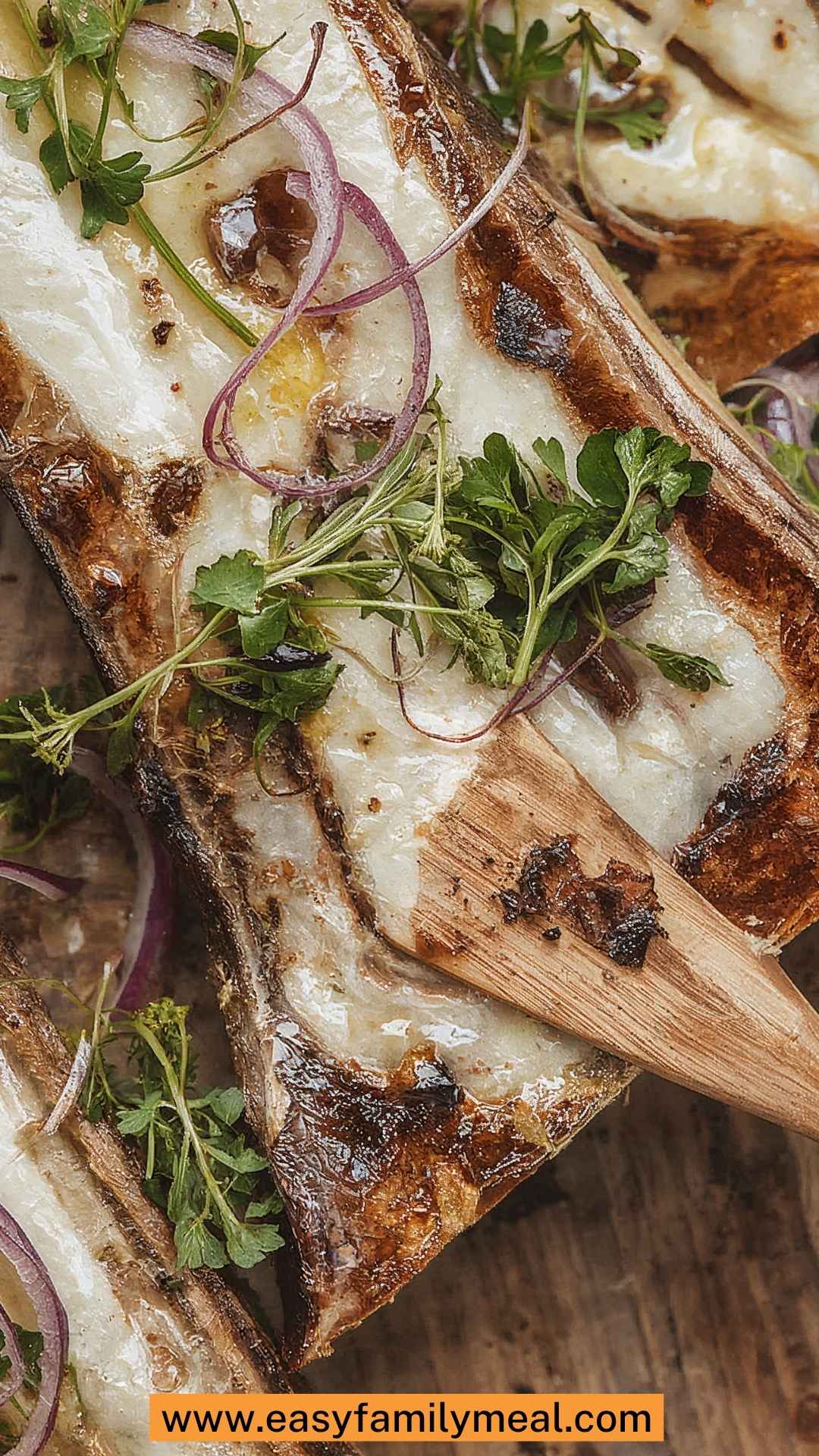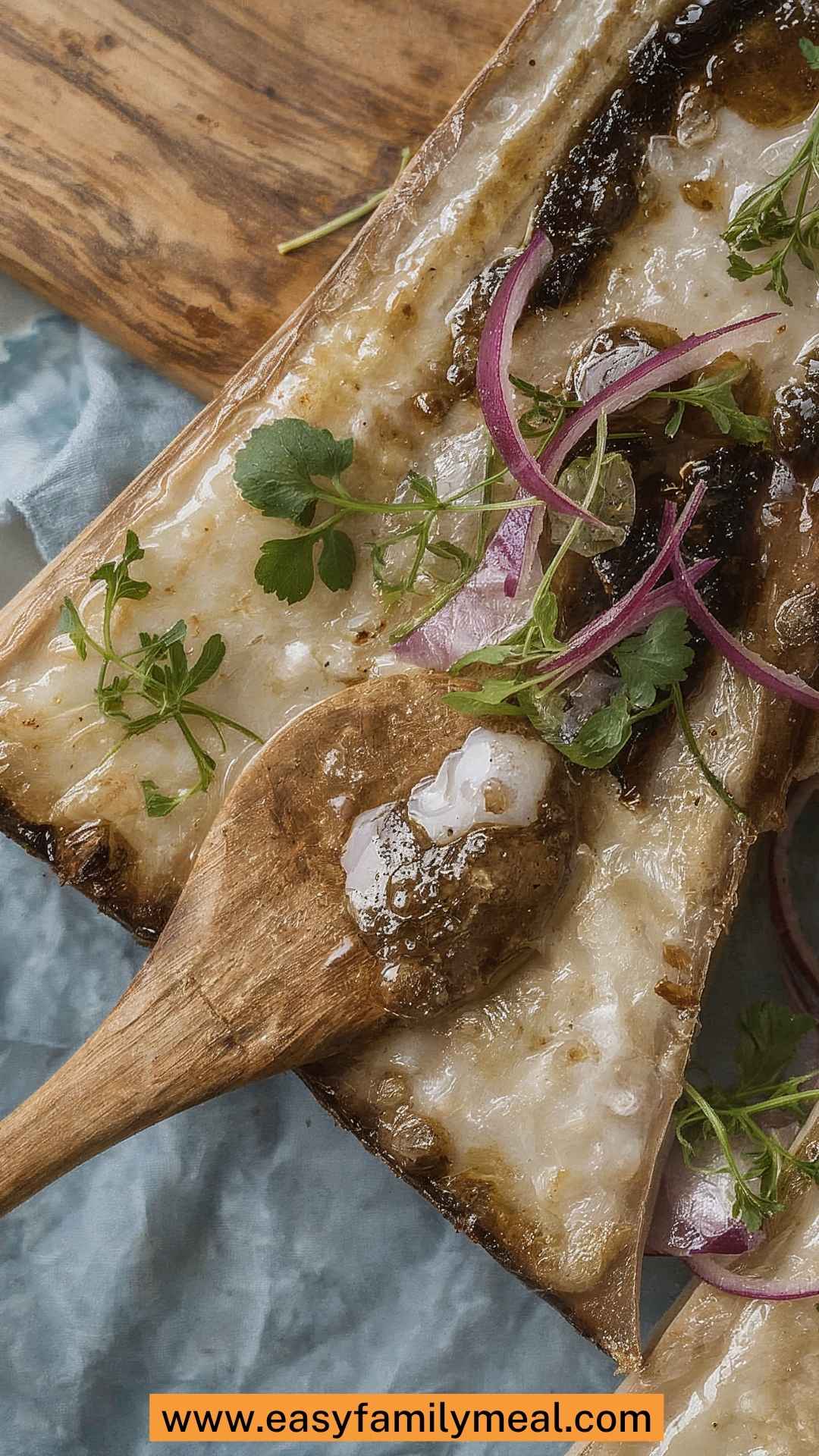Nutrition Facts
Servings 4
- Amount Per Serving
- Calories 400kcal
- % Daily Value *
- Total Fat 30g47%
- Protein 10g20%
* Percent Daily Values are based on a 2,000 calorie diet. Your daily value may be higher or lower depending on your calorie needs.

Before we dive into the joy of making roasted marrow bones, let’s explore some options to serve alongside this delectable dish. Roasted marrow bones are rich and flavorful, so pairing them with light, fresh sides can create a well-rounded meal. Here are a few ideas:
1. Crusty Bread: Think rustic, artisanal bread. A great slice helps to scoop out the tender marrow. Try a sourdough or a whole grain bread to complement the richness.
2. Pickled Vegetables: The acidity from pickled veggies cuts through the marrow’s richness. Consider pickled onions, cucumbers, or even a bright dill pickle.
3. Herb Salad: A mix of fresh herbs such as parsley, cilantro, or arugula tossed with a simple lemon vinaigrette offers a refreshing contrast to the dish.
4. Roasted Root Vegetables: Carrots, parsnips, or potatoes roasted until crispy can add wonderful texture and flavor diversity to your meal.

Roasted marrow bones are exactly what they sound like: bones, typically from beef, that have been cut and roasted to extract the marrow inside. This marrow is a rich, fatty substance that adds a depth of flavor that is both decadent and satisfying. Originally a staple in French cuisine, this dish now delights palates worldwide.
There are countless reasons to embrace the art of making roasted marrow bones. Here are a few compelling ones:
Easy Preparation: The process is straightforward, requiring minimal ingredients and effort. You won’t need to be a master chef to impress your guests!
Rich Flavor: Roasting brings out the deep, savory flavors of the marrow. When you pair it with a hint of salt and acid, it transforms into something you can’t resist.
Versatile Serving Options: Roasted marrow can be enjoyed in various ways. Spread it on bread, enjoy it with herbs, or simply savor it straight from the bone.
Nutritional Benefits: Bone marrow is nutrient-rich, offering healthy fats and essential vitamins. When enjoyed in moderation, it can be a nourishing addition to your diet.
To craft this delightful dish, gather these simple ingredients:

Let’s break this down into easy-to-follow steps.
Start by preheating your oven to 450°F (232°C). This high heat is key to getting the marrow nice and bubbly.
Rinse your marrow bones to ensure they’re clean. Place them in a roasting pan, cut side facing up. This positioning lets the heat penetrate and cook the marrow evenly.
Sprinkle the bones with smoked paprika, salt, and pepper. Drizzle the fresh lemon juice over them. This combination will enhance the flavor without overpowering the natural richness of the marrow.
Now, pop those bones into your preheated oven. Roast them for about 15-20 minutes. You want the marrow to become soft and bubbly, and it should be slightly browned on top.
Once done, remove the bones from the oven. Allow them to cool slightly. Sprinkle with flaky sea salt. Serve with crusty bread and your choice of sides to scoop out the indescribably good marrow.
Choose Quality Bones: Opt for bones from grass-fed beef whenever possible. It can make a difference in flavor and nutritional content.
Don’t Overcook: Keep an eye on the marrow to avoid it becoming too runny. You want a silky texture, not soup!
Use Extra Flavor: Consider adding minced garlic or herbs on top of the marrow before roasting for an additional flavor layer.
Act Fast: Serve right after roasting. Marrow tastes best fresh, while warm and gooey.
Leftovers?: Scoop out any leftover marrow and use it in soups, sauces, or even as a spread.
Each serving of roasted marrow bones provides a wealth of nutrition. On average, it contains:
If you have leftover marrow, there’s no need to let it go to waste. Allow it to cool to room temperature, then transfer it into an airtight container. It can be refrigerated for up to 3 days. To enjoy it later, simply reheat gently in a warm oven.
To create a complete meal, consider these tasty sides:
Pickled Radishes: These add a tangy crunch that nicely balances the richness of the marrow.
Garlicky Greens: Sautéed kale or spinach with garlic takes your dish to another level. The garlic flavor complements the marrow marvelously.
Grilled Asparagus: Lightly charred, this adds a smoky note while keeping it fresh and vibrant.
Roasted Brussels Sprouts: Their natural sweetness, when roasted, pairs beautifully with the savory marrow.
If some ingredients are hard to find, don’t worry. Here are some alternatives:
Marrow Bones: If you can’t find beef marrow bones, look for lamb or pork bones as they can work as substitutes.
Smoked Paprika: Regular paprika can suffice, but if you have chili powder, it can add a nice spicy dimension.
Lemon Juice: Substitute lemon with lime juice for a similar brightness.
Flaky Sea Salt: Any coarse salt will do. Just be careful with quantities as some salts are saltier than others.

Roasted marrow bones are a delightful treat that taps into the rich culinary history of food that brings warmth and flavor to our gatherings. By following this simple recipe, you’ll impress friends and family with your newfound cooking prowess.
Whether enjoying it as part of a cozy dinner or lavish dinner party, roasted marrow bones are a standout dish that evokes comfort and satisfaction. Enjoy every bite!
Roasted marrow bones have been a cherished delicacy for centuries, and for good reason. This simple dish boasts flavors that can make even the ordinary extraordinary. Whether you're preparing for a family feast or just treating yourself, mastering this recipe adds a unique culinary technique to your repertoire.
I remember the first time I tasted roasted marrow bones. A friend served them at a dinner party, and I thought, “Oh my, what have I been missing all these years?” Upon that first scoop, I understood the love for this dish. The rich, buttery marrow paired with a crunch and freshness from sides created an unforgettable experience. So, let’s get cooking!
Servings 4
* Percent Daily Values are based on a 2,000 calorie diet. Your daily value may be higher or lower depending on your calorie needs.